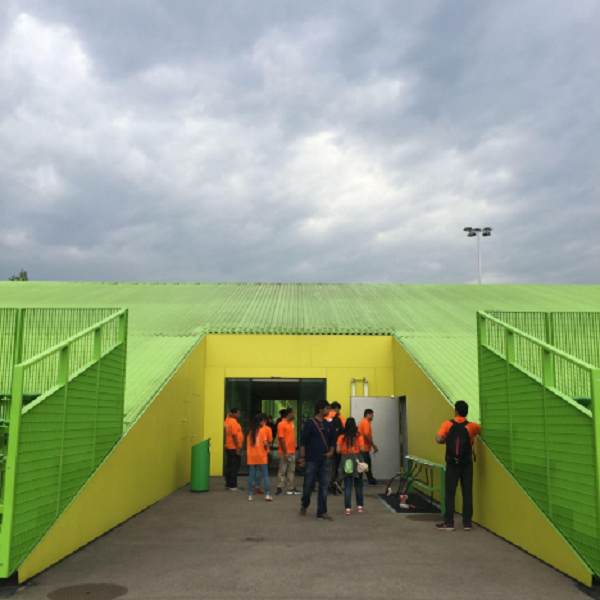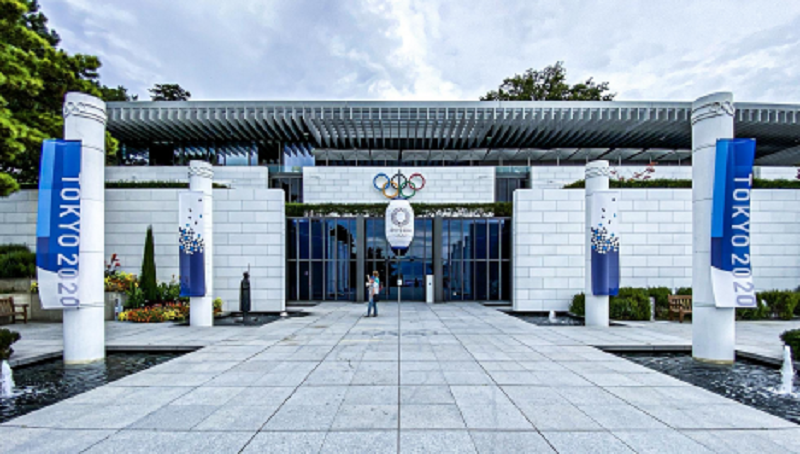By Akanksha Thapa & Harsh Chauhan-Studio Archohm
On our recent architecture travels to Switzerland, we explored the Olympics Headquarters & Museum and immersed ourselves into the culture of fitness and the architecture that facilitates it.
Pierre de Coubertin, founder of the International Olympic Committee, found Lausanne to be a haven of peace that was spared by the World Wars. Since then, the IOC has remained in this city that has also been called the “Olympic Capital” in 1993, the year of the Olympics museum’s inauguration. To celebrate the 125th anniversary, the IOC moved into a new “Olympic House” in 2019.
There’s a reason Switzerland ranks as the third happiest country in the world. Sports here go well beyond being just a hobby. It’s a culture, a culture of fitness, deeply ingrained within the lifestyle of both men and women of all ages, regularly indulging in swimming, jogging, fitness, tennis, volleyball, martial arts, etc. It is no wonder that we stumbled upon so many sports facilities built by emerging architects, while researching for our itinerary. Even in the farthest and quaint hill towns, one could find a fully equipped facility sanctioned for and by the community.
What seemed as a common thread across was that each facility was driven by multifunctionality while respecting the context they were built in. Large spans and windows framing the beautiful swiss landscapes, distinguished through materials like wood, concrete and steel, employed in surprising ways and centers being used to their full capacity.
In the small town of Sargans, south of St. Gallen, stands a sports center with state-of-the-art facilities. The building, made from a wood-concrete composite structure celebrating local materials while being light-weight. From the series of dense wooden columns mirroring the landscape to the interior finishes, everything spoke of wood. The louvered façade sculpted the building as a block of wood from the outside while providing ample natural light, without compromising privacy.

Contrastingly, the Heerenschürli sports facility, in Zurich by Topotek-1 is a perfect example of how a sports city can exist within urban conditions and impact
millions. It houses a dozen soccer fields, a baseball field and a central building which comprises locker and maintenance facilities, a depot, and a skating facility. It also houses a restaurant for the public, making the facility a welcoming space for visitors and players alike. The landscape is Swiss in its own way – clean aesthetics, honest engineering and straightforward hues. The distinctive roof provides structural stability to the built form and establishes a dialogue between the building and the landscape. The concrete and grey sandstone-built form is humble and yet powerful. The structure is wrapped with green colored corrugated metal sheets that encapsulate the wooden construction and blend in with the landscape. The services are well articulated, neatly assembled and color coded – red for hot water and blue for cold water. The unimaginable focus to the details transforms the aesthetics of space and redefines the character and relation of the structure and the landscape.
The play of two different shades of green colour, which is created by wire mesh walls superimposed on one another integrates a playful element to the landscape. The design blends with the natural and the man-made greens. The courts also consist of different shades of greens on the floor – natural and artificial. It was astonishing to see how the space was accessible and used lavishly by all age groups.

This sports hall also acts as a community hall for the village Le Vaud. The facility is built right across the old school building. The triangulated form of the building has taken its inspiration from the swiss alps wrapped around in a metal façade with wooden lining towards the openings. The most striking part of the project was its concrete flooring mixed with the local stone dust giving it the beige tone. The stone block in the front is a deliberate attempt to stitch this contextual dialogue.
30kms towards the east of Le Vaud, close to the edge of Lake Geneva, is another facility built of exposed concrete from the inside. From the outside the building the covered in white metal sheet with a crown of polycarbonate sheet which allows natural night inside. The structure has been perceived as concrete walls and metal roof for the large spans.
Sports are wholesomely enjoyed in our country and hold an integral part in our national culture. Sports unite us all and the Olympics are a glory for every country. Thanks to the digital world that we are living in, everyone in a hundred children dreams of Olympics glory. To transform sports into an opportunity and inspiring career path, our country needs to invest unconditionally into sporting facilities.


